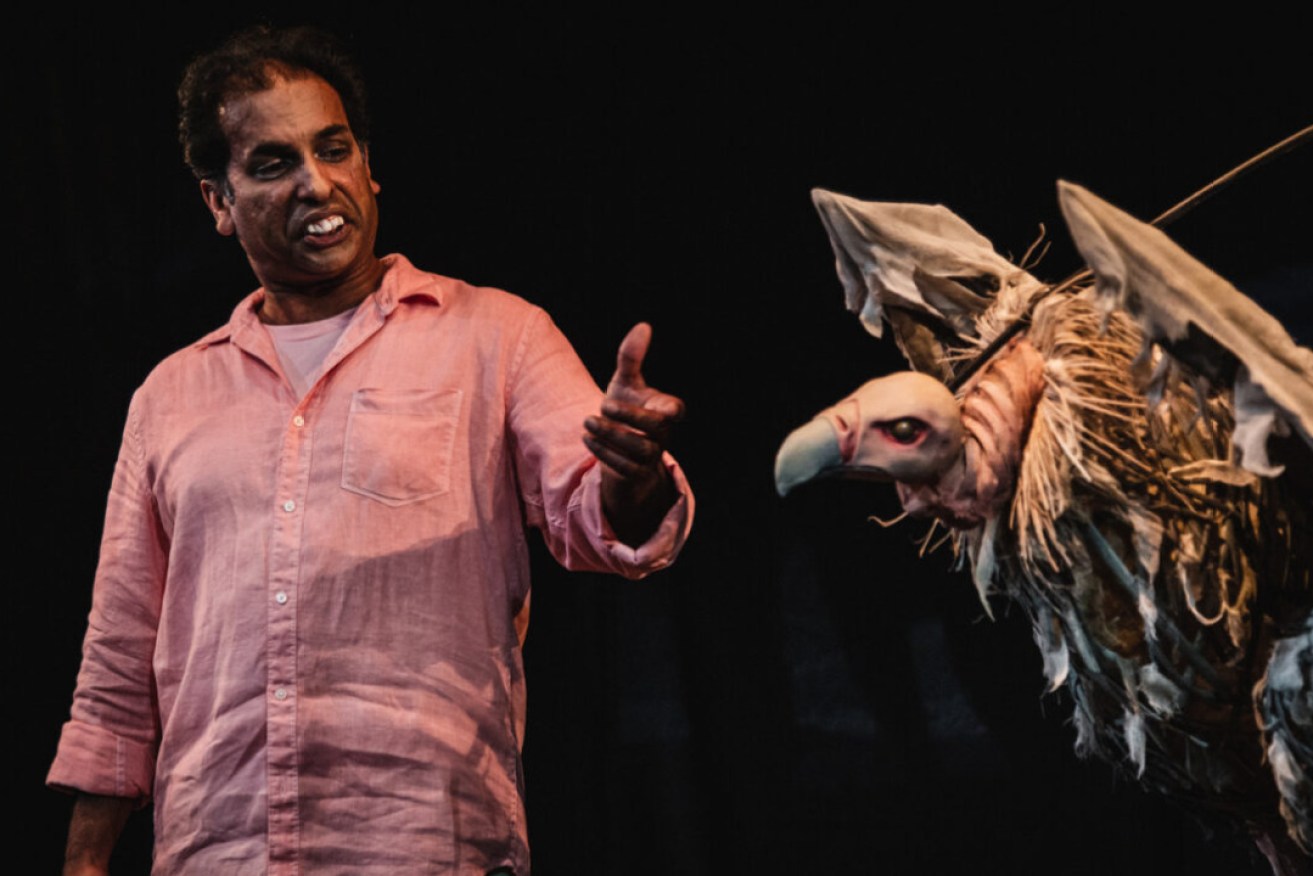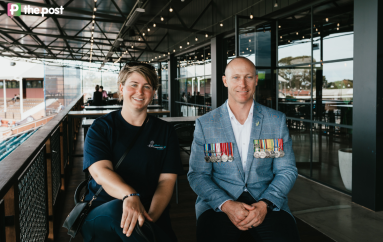OzAsia review: Paradise or the Impermanence of Ice Cream
Life, death, religion and Harvey Norman – this one-man show combines comedy and chaos with moments of reflection on the nature of existence.


Jacob Rajan in 'Paradise or the Impermanence of Ice Cream'. Photo: supplied
What signifies life’s fleeting pleasures better than ice cream? What symbolises death more profoundly than a vulture?
New Zealand’s Indian Link Theatre Company marvellously brings these concepts together in their latest production Paradise or the Impermanence of Ice Cream, a comedic tale about life, death, ambition, religion, money, and of course, ice cream.
Performer Jacob Rajan and director Justin Lewis are co-writers of this play, drawing inspiration from Ernest Becker’s Pulitzer prize-winning text The Denial of Death.
This story is told, primarily, through the character of Kutisar, a 50-year-old Harvey Norman employee who is flung into limbo on his way to the afterlife. He is frantically trying to avoid death and is forced to revisit his life as a younger man working as a chaiwallah, or street tea vendor, in amongst the vibrant chaos of Mumbai. While reflecting, he navigates a story about the real-life mystery of India’s vanishing vultures – particularly significant to death within the Parsi faith.
The writing is sharp and layered, and somehow, within this 90-minute production, Rajan and Lewis find space to explore a culture and faith that many in Australia may be unfamiliar with, unpack existential ideas of what makes up a life, and even find room for some disco dance moves and the Harvey Norman jingle.
Rajan’s performance is sensational, as he effortlessly moves between a total of seven characters. These include the likes of Meera, an intelligent young woman who is locked into running her late grandfather’s kulfi, or ice cream shop, and Farooq, a Parsi community leader.
Each character has their own distinct voice, mannerisms and physicality, and Rajan’s ability to swiftly and decisively embody each one allows audiences to easily follow interactions, even with multiple characters in the one scene.
While this is a one-man show, Rajan shares the stage with a lifelike vulture – a puppet brilliantly operated by Jon Coddington. The vulture has a personality of its own, which includes its own set of dance moves, and while it is initially feared, it grows to not only steal the audience’s affection, but to steal the show.
The production is tied together with inspired creative elements. John Verryt’s set design is simple – a rock that sits on stage in front of a screen – but is used effectively, under Lewis’s direction, to give levels to the space, and complement changes in settings and characters. The projections on the screen infuse colour and movement into the production.
David Ward’s subtle elements of sound design also go a long way in bringing this story to life, with details such as a knock at the door, or the churning of an ice cream machine.
Between the comedy and the chaos in Paradise or the Impermanence of Ice Cream, there are deep moments for pause and reflection, made even more impactful alongside the humour. It leaves us wondering what we give significance to while we are alive, and how our fears and ideas of death influence how we live this one, impermanent life.
Paradise or the Impermanence of Ice Cream is showing at the Space Theatre until October 21 as part of the OzAsia Festival. Read more OzAsia stories and reviews here.
This article is republished from InReview under a Creative Commons licence. Read the original article.
InReview is an open access, non-profit arts and culture journalism project. Readers can support our work with a donation. Subscribe to InReview’s free weekly newsletter here.
![]()




